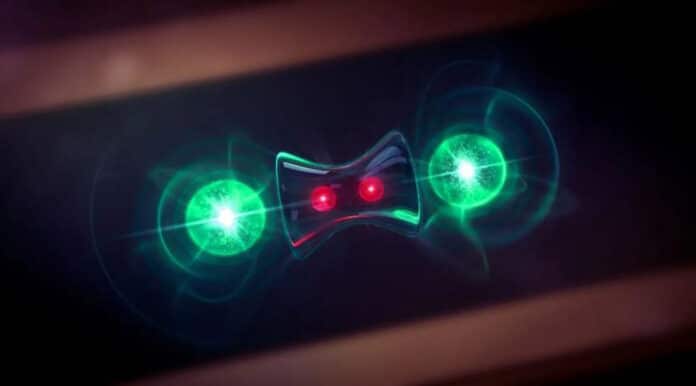Biphoton states in high dimensions are attractive sources for quantum applications, including quantum imaging and high-dimensional communications. When projective measurement methodologies are used, it is typically time-consuming and impractical to completely characterize these states; however, recent developments in coincident imaging technologies enable this by parallelizing many measurements.
In a new study, scientists from the University of Ottawa, in collaboration with Danilo Zia and Fabio Sciarrino from the Sapienza University of Rome, have introduced biphoton digital holography. The technology demonstrates a fast and efficient approach to reconstructing the full quantum state of entangled particles.
Using this technique, scientists visualized the wave function of two entangled photons in real-time.
A fundamental concept in quantum physics, the wave function thoroughly comprehends a particle’s quantum state. It enables quantum scientists to predict the probable outcomes of various measurements on a quantum entity, e.g., position, velocity, etc.
This predictive capacity is invaluable in the quickly developing field of quantum technology, where knowing a quantum state that is formed or input into a quantum computer will allow us to test the computer itself. Additionally, the quantum states used in quantum computing are very complicated and comprise numerous entities that could display potent non-local correlations (entanglement).
Determining the wave function of such a quantum system is a challenging task. This is also known as quantum state tomography or quantum tomography.
Full tomography requires a lot of measurements with standard techniques (based on the so-called projective operations), and this number rises quickly as the system becomes more complicated (dimensional). The study team’s earlier studies using this method demonstrated that it could take hours or even days to characterize or measure the high-dimensional quantum state of two entangled photons. The quality of the outcome is also very noise-sensitive and is influenced by the intricacy of the experimental setup.
The projective measuring approach to quantum tomography can be compared to gazing at the high-dimensional object’s shadows projected from various angles on various walls. The only thing a researcher can see are the shadows, and they may deduce the shape (state) of the entire object from them. For instance, a CT scan may rebuild the information of a 3D object from a collection of 2D images.
Another way of constructing a 3d object is called digital holography. It is based on recording a single image, called an interferogram, obtained by interfering with the light scattered by the object with reference light.
Scientists extended this concept to the case of two photons. It is necessary to superimpose a biphoton state with a supposedly well-known quantum state to reconstruct it. After that, the spatial distribution of the sites where two photons arrive simultaneously must be examined. A coincidence image is a picture taken when two photons arrive simultaneously.
These photons can originate from the known source or the reference source. According to quantum mechanics, it is impossible to pinpoint the origin of the photons. This generates an interference pattern that can be utilized to piece together the unknown wave function. A sophisticated camera that records events with nanosecond resolution (one billionth of a second) on each pixel made this experiment possible.
Dr. Alessio D’Errico, a postdoctoral fellow at the University of Ottawa and one of the co-authors of the paper, highlighted the immense advantages of this innovative approach: “This method is exponentially faster than previous techniques, requiring only minutes or seconds instead of days. Importantly, the detection time is not influenced by the system’s complexity – a solution to the long-standing scalability challenge in projective tomography.”
Journal Reference:
- Zia, D., Dehghan, N., D’Errico, A. et al. Interferometric imaging of amplitude and phase of spatial biphoton states. Nat. Photon. (2023). DOI: 10.1038/s41566-023-01272-3
